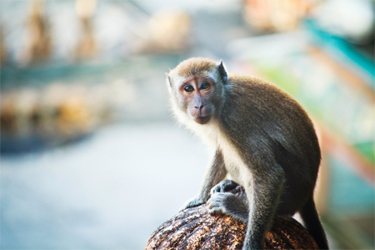Establishment Of An Induced Hemophilia A Model In Anesthetized Cynomolgus Monkeys
By Li Zhan, Narine Lalayeva, Carsten Dan Ley, Zhizhan Song, Kevin Zhang, Jilin Deng, Drew May, Brett Megrath, and Julie Forget

Hemophilia A is a bleeding disorder caused by a deficiency in Factor VIII (FVIII), a vital protein for blood clotting. A tail bleeding model in cynomolgus monkeys with antibody-induced hemophilia was first developed by Prisys Biotech and later refined at Altasciences to assess the hemostatic effects of pro-coagulant compounds. In this model, either a vehicle or polyclonal anti-FVIII antibody was administered intravenously 60 minutes prior to initiating the tail bleeding procedure, which was performed under full anesthesia. Blood samples were collected before treatment, after vehicle or anti-FVIII antibody administration, and prior to euthanasia at the end of the experiment.
The study compared Activated Partial Thromboplastin Time (APTT) and Thromboelastography (TEG) results. Bleeding time and hemoglobin loss were monitored at four intervals, from 0 to 40 minutes post-initial tail bleeding, with challenges conducted every 10 minutes. No changes in APTT were observed in the vehicle control group, while APTT was approximately doubled in the anti-FVIII antibody-treated group. TEG results for the vehicle control group showed stable Reaction (R) time, Clot Formation (K) value, and α-angle at all time points. In contrast, hemophilia induction significantly increased the mean R time, elevated the mean K value, and reduced the α-angle. Additionally, the mean total bleeding time and hemoglobin loss at 40 minutes post-venipuncture increased approximately 3.7 and 2.6 times, respectively, in the hemophilia-induced animals. The induction of hemophilia A with a 16.4 mg/kg dose of sheep anti-FVIII resulted in the expected disturbances in blood coagulation and clot formation—evidenced by APTT prolongation, increases in R and K values, and a decrease in the α-angle—and substantially increased bleeding time and blood loss, confirming the successful establishment of an experimentally induced hemophilia A model in cynomolgus monkeys.
Get unlimited access to:
Enter your credentials below to log in. Not yet a member of Drug Discovery Online? Subscribe today.
